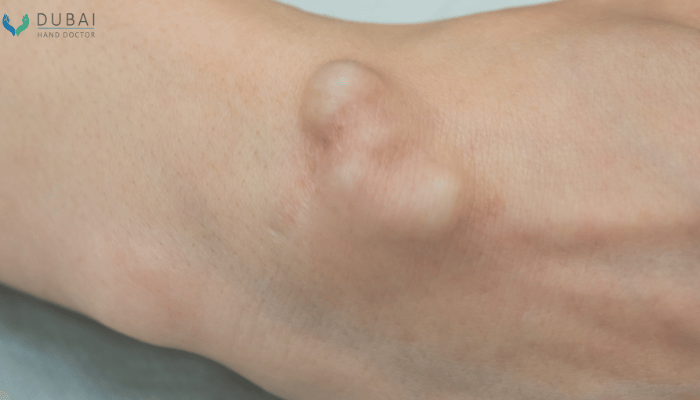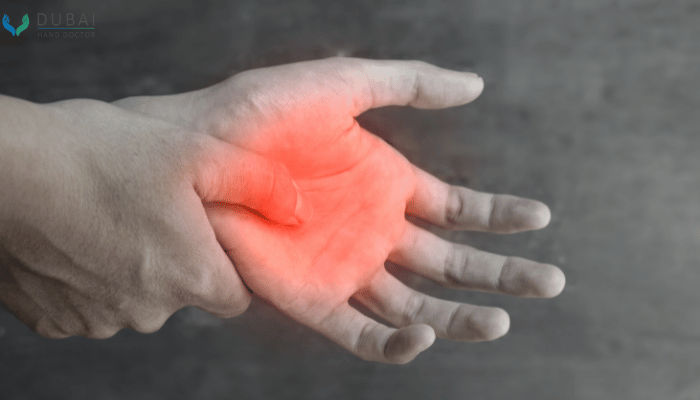What is the most common peripheral nerve injury?

Peripheral nerve injuries are prevalent and can be quite debilitating, affecting many people each year. These injuries can happen due to sports, accidents, or repetitive movements, and they can range from mild to severe, impacting daily activities and overall well-being.
In this blog, we’ll explore the most common peripheral nerve injury, looking at its causes, symptoms, and the best ways to treat and recover.
What is a peripheral nerve injury?
A peripheral nerve injury occurs when damage affects the nerves extending from the spinal cord and brain to the body outside the central nervous system.
These peripheral nerves transmit signals between the central nervous system and the rest of the body, regulating sensations, movements, and motor coordination.
There are 3 types of nerve injury based on different factors, such as the mechanism of injury and location:
- Carpal tunnel syndrome
- Cubital tunnel syndrome
- Radial tunnel syndrome
Carpal tunnel syndrome is the most prevalent type of peripheral nerve injury.
What is carpal tunnel syndrome?
Carpal tunnel syndrome (CTS) is a common condition characterized by numbness, weakness, and pain in the hand and wrist.
The condition happens when the median nerve is squeezed or compressed during its passage through the wrist. The hand may feel swollen and ineffective, often prompting a need to shake it out upon waking.
What are the carpal tunnel syndrome causes?
Carpal tunnel syndrome can be damaged can be caused by a combination of factors:
- Heredity
- Repetitive hand use
- Hormonal imbalance
- Pregnancy
- Injury resulting from an accident, a fall, or sports can stretch, compress, crush, or cut nerves.
- Autoimmune diseases, like lupus and rheumatoid arthritis.
- Medical conditions, such as diabetes and Guillain-Barre syndrome, can damage nerves.
Gender also plays a role, with women being three times more likely to develop this condition.
What are the carpal tunnel syndrome symptoms?
- Numbness, tingling, and pain in the hand and wrist
- Occasional shock-like sensations that extend to the thumb and index, middle, and ring fingers
- Muscle weakness and clumsiness in the hand
- Reduced hand strength
How is carpal tunnel syndrome diagnosed?
To diagnose carpal tunnel syndrome, Dr Ehab will review your medical history, carefully examine your hand and wrist, and perform several physical tests.
- Wrist Tests: The Tinel and Phalen tests elicit symptoms that confirm carpal tunnel syndrome.
- Laboratory Tests and X-rays: These reveal underlying conditions and nerve-damaging diseases.
- Electrodiagnostic Tests: Nerve conduction and electromyography tests measure how well your median nerve works and help determine whether there is too much pressure on the nerve.
- Ultrasound: An ultrasound utilises high-frequency sound waves to produce detailed pictures of bone and tissue.
What are the different carpal tunnel syndrome treatment options?
Some of the most common treatments for nerve damage include:
- Splinting: Wearing a splint at night to keep the wrist straight can help relieve symptoms.
- Activity Modification: Avoid tasks that trigger symptoms, with frequent breaks and cold packs for swelling.
- Medications: Over-the-counter or prescription medications like ibuprofen or naproxen to reduce inflammation and relieve pain.
- Corticosteroid Injections: Directly injecting corticosteroids into the carpal tunnel can reduce inflammation and alleviate symptoms.
- Exercise: Engaging in recommended hand exercises can strengthen the muscles supporting the wrist, improve the range of motion, and alleviate pressure on the median nerve.
- Surgery: If nonsurgical treatments fail to provide lasting relief, Dr Ehab may recommend surgery. It relieves pressure on the median curve by cutting the transverse carpal ligament.
Contact Dr Ehab Bassim Aldlyami for Peripheral Nerve Syndrome Treatment in Dubai
When it comes to addressing peripheral nerve syndrome and ensuring the utmost care for your hand and wrist, there’s a name you can trust: Dr Ehab Bassim Aldlyami.
As a Consultant Trauma and Orthopaedic Surgeon specializing in Hand and Wrist, Dr Ehab specialises exclusively in treating hand and wrist conditions. With a wealth of experience and a dedicated focus, he stands out as the ideal choice for your peripheral nerve syndrome treatment.
Book your consultation today and take the first step towards lasting relief.
FAQ
The leading cause of peripheral nerve injuries is trauma, including accidents, falls, and sports injuries.
Carpal tunnel syndrome is the most frequently nerve injury, characterized by wrist compression of the median nerve.
The median nerve is the most common type of peripheral nerve. It runs from the forearm into the hand and is frequently involved in conditions like carpal tunnel syndrome.
The three types of peripheral nerve injuries are carpal, cubital, and radial tunnel syndrome.
Peripheral nerve injury classification is done from mild to severe forms of injury.














